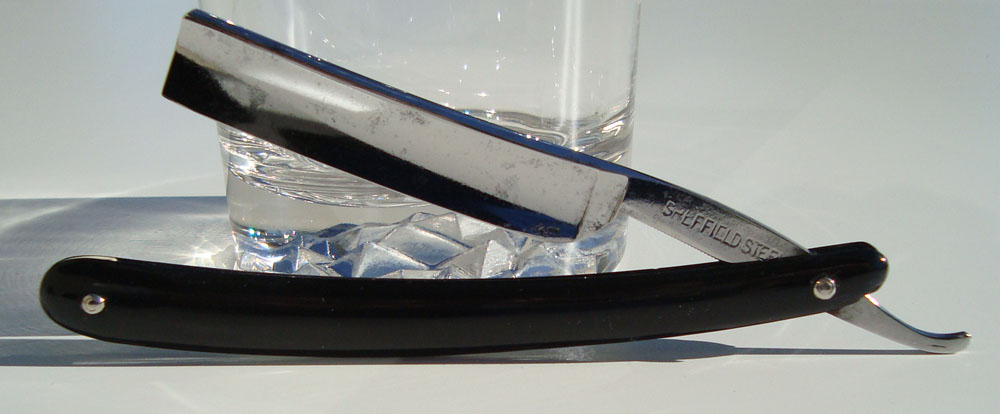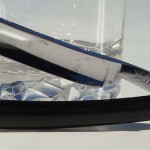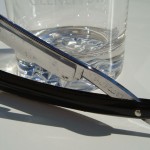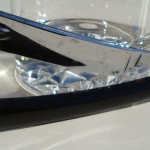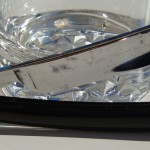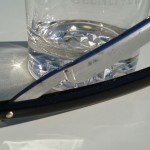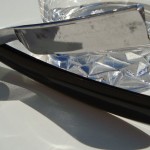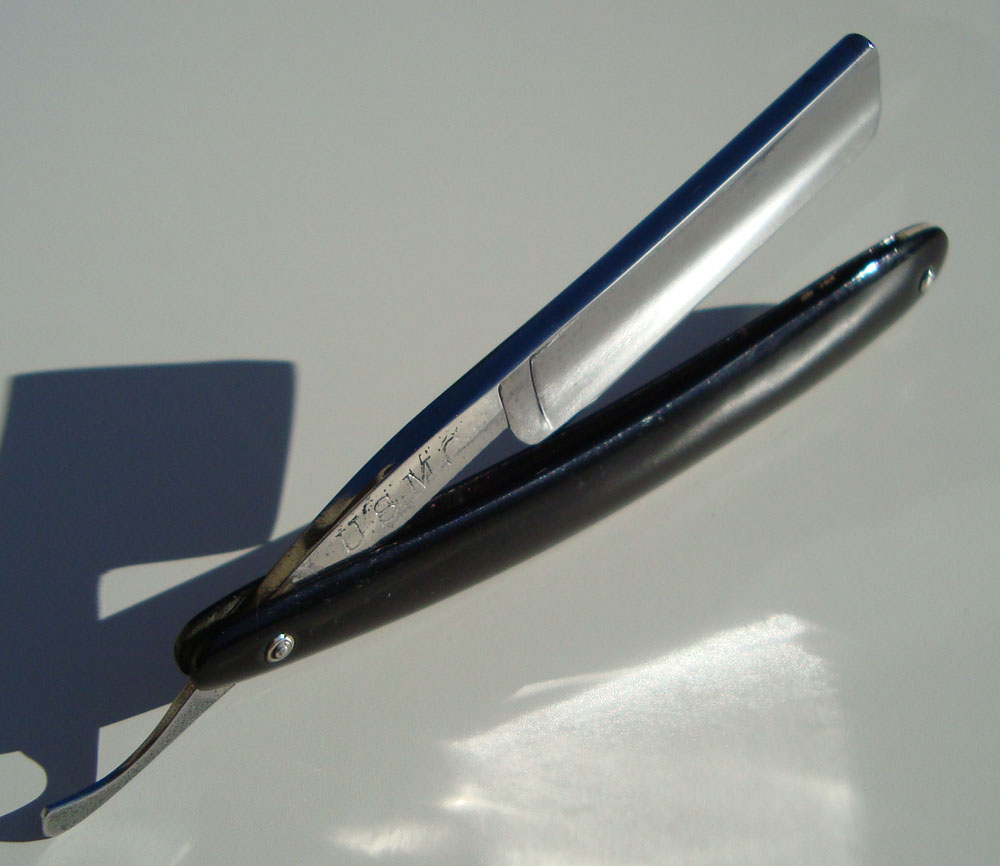This razor is stamped with only the words “Sheffield Steel.” Based off of the grind, it is highly likely that this razor was ground in Germany of steel made in Sheffield (the world’s steel center of the time). Sheffield silver steel is prized for its sheen and edge holding abilities.
This razor features a hollow ground with an aggressive looking square point and a slight curve to the blade. The tang features bottom jimps. The scales are made from black horn restored to their original luster and shine.

